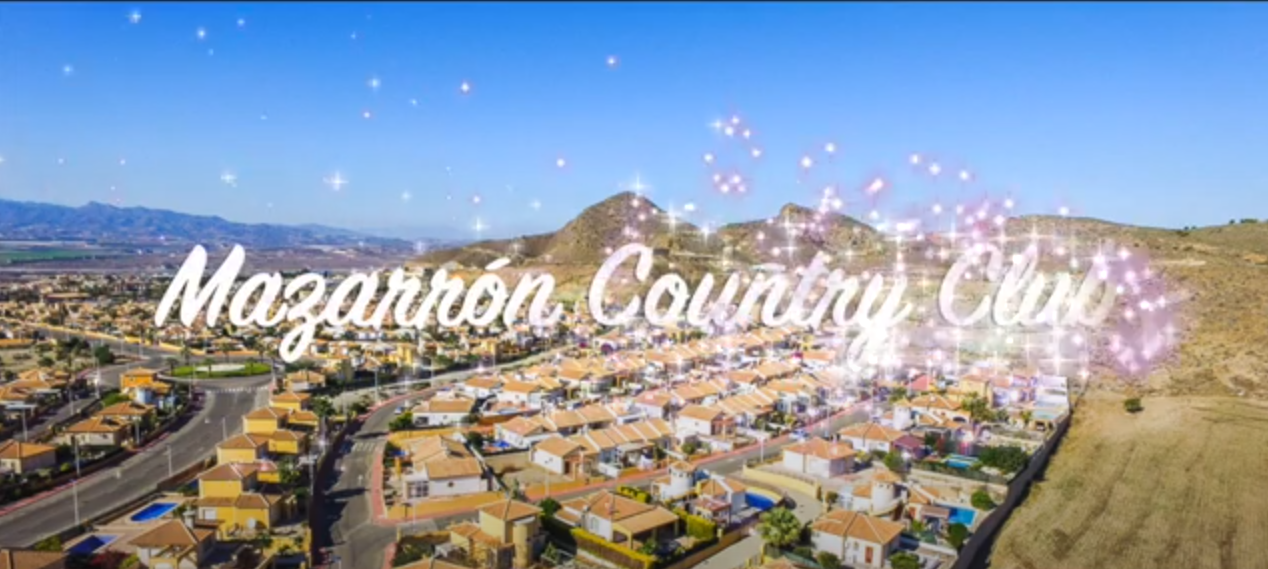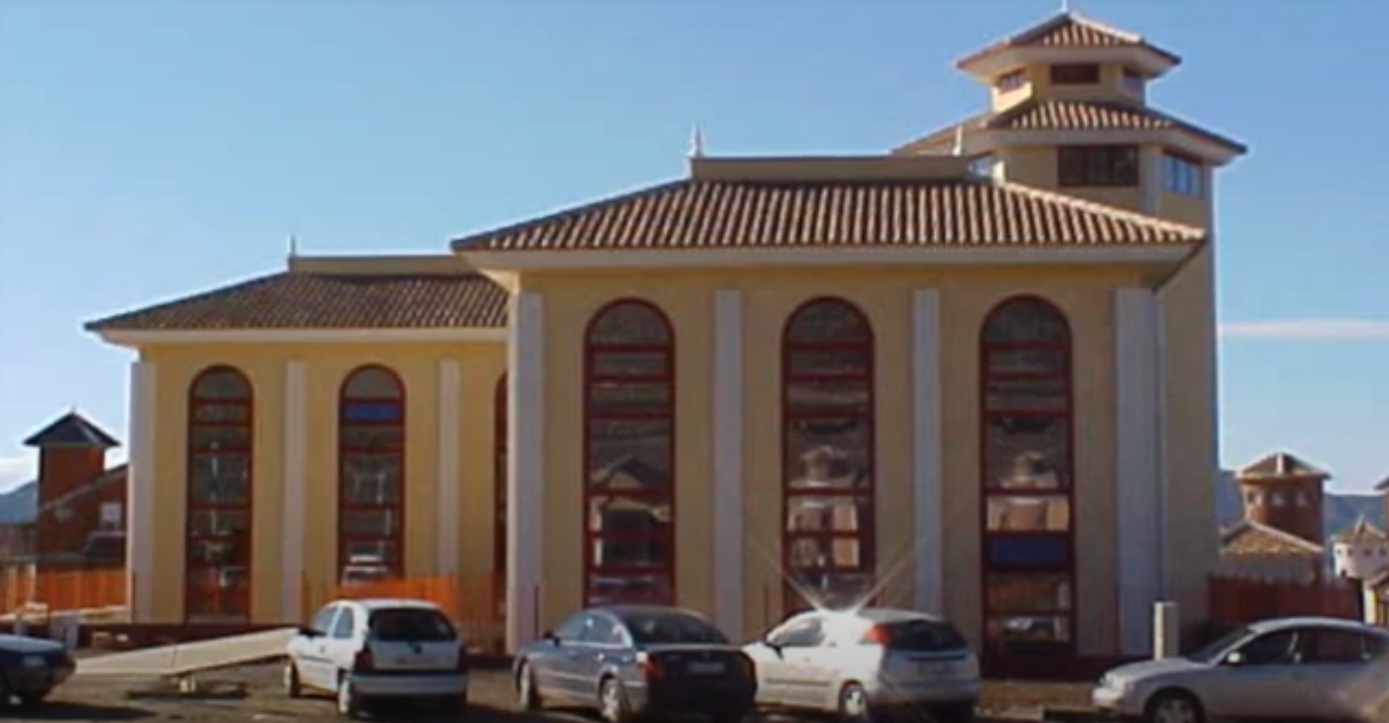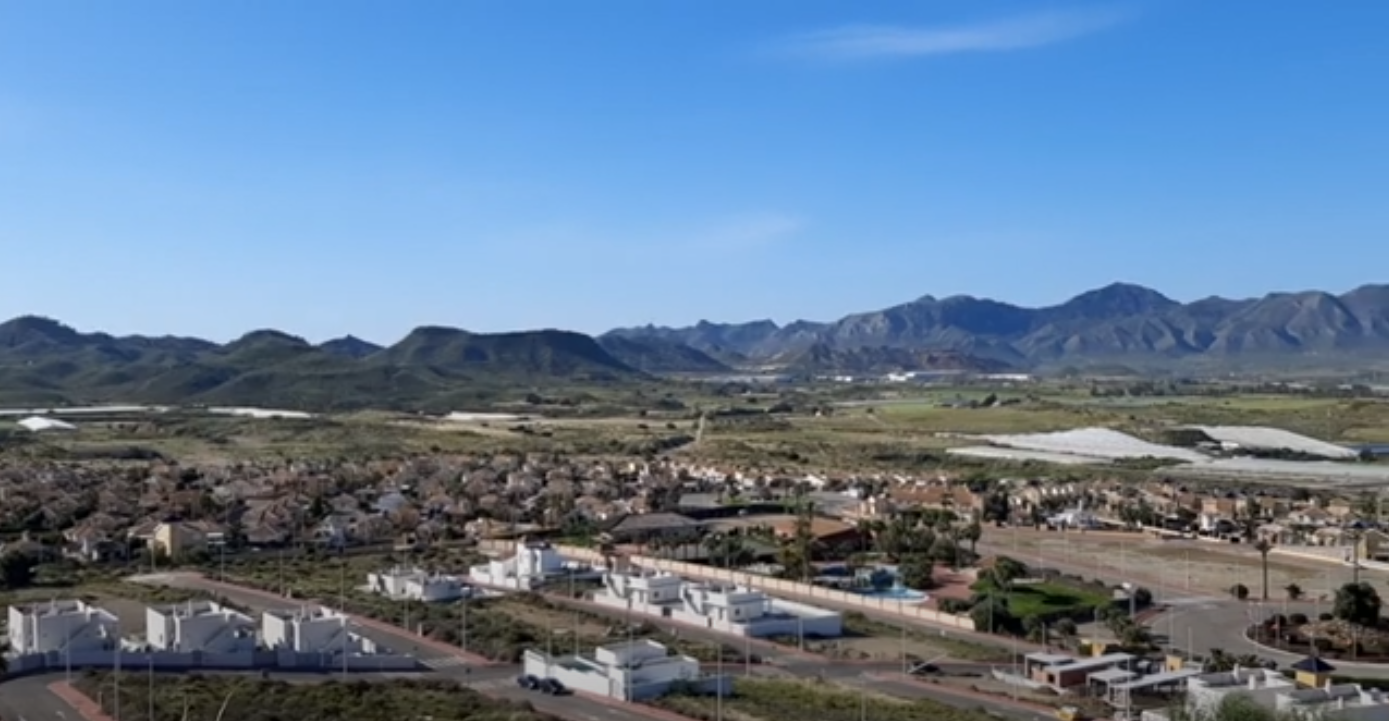Click on the link below for a unique video of our beautiful Urbanisation before reading the story of the last 20 years.

Mazarrón Country Club 2000 to Now
Most people like to live at the Mazarrón Country Club because it is a beautiful area and everything is well maintained. That has not always been the case, so we thought it would be nice to tell a bit about the history of the Mazarrón Country Club.Mazarrón Country Club (MCC) started being constructed around the year 2000 and its first owners started to move in a couple of years later.
It must be said that MCC looked very different from what we see today and on the journey to get here the initial owners faced a lot of challenges and it is through the hard work and tenacity of those early owners that the challenges and difficulties they faced were overcome.
MCC was constructed by a building group called Huma Mediterraneo and they began with the Manzanas from the main front entrance up to and including the Taberna, which was initially used just by the workmen at lunchtimes and it was not open at night.
The early owners had to endure unmade roads and pavements, no street lights, electricity that was supplied by generators and the water was builders water so it was not purified. The generators used to run out of diesel and the water supply was very unreliable and could be off for as long as 4 days.
The owners complained to Huma at various meetings who basically were not interested in resolving any of the issues. The frustrated owners formed a group called the Association Of Neighbours (AON) so they could be more co-ordinated in their demands and complaints.
At this time Huma informed the owners that a Community of Owners (CofO) had to be formed with a President, Board members and an Administrator, and that owners would have to start paying Community Charges and also that a set of Statutes would have to be written.
At this time the AON tried to get Huma to complete the estate, build the golf course and provide some of the other promised services. Huma was apparently in financial difficulties around that time, and despite numerous promises to finish the estate, it was basically left as it was. Huma did put the older parts of the urbanization onto mains electricity and some habitation certificates were issued, illegally as they should not have been issued until the estate was completed.
Despite all the efforts by each successive President and Boards no further habitation certificates have been issued and the council have refused to adopt the urbanization.
Because of Huma’s lack of interest in completing the estate and the growing frustration of the owners the AON decided enough was enough, so a large number of them pooled their personal finances and took Huma to court to either get the estate finished or to pay compensation.
Shortly after this, Huma announced that they were no longer prepared to pay for the diesel or the generators that were powering the upper half of MCC thus leaving the homes and the depuration plant without any power.
The administrator was asked to find a way for the costs for these essential service to be shared out equitably but they did not achieve this. Alarmingly funds that owners had put aside for meters and startup costs had disappeared and other failings of the administrator soon became apparent.
The urbanization was in crisis and MCC was almost bankrupt.
An EGM was hastily called and Barry Smith became the new President, he promptly fired the Administrator who had been embezzling the owners’ funds. There was a lot of legal wrangling which culminated in a court case which MCC eventually won. Barry formed a new board and organized a team of around 30 volunteers to self-manage the urbanization.
Using the skills and expertise of some of the owners various groups were formed with responsibilities for accounts, IT, rubbish collection, communications, security, gardening, secretarial support and debt collection as not all owners paid their community fee. This particular group was led by Lyn Snowden and there is a bench at the top of the Paseo in her memory. The IT database that was produced at the time by John Wilson is still in use today.

In the early years there were no Facebook sites or Web page as we have today, just a bulletin board the owners used called Soapbox. This was used to ask like-minded owners to join new ventures, such as a Gardening Club, and for the owners to keep in touch with each other and discuss any issues.
At that time there were no flower beds, trees etc, just waste high weeds. The Gardening Group, which by then consisted of 10 – 12 people, asked Huma for permission to plant on the wastelands, which they subsequently allowed. Owners then gave cuttings and plants they didn’t want to enable the Gardening Club to begin the transformation. The group worked hard and arranged BBQ’s at the Taberna, with board members taking their own BBQ’s to cook on, the members went and bought ingredients to make salads, dips etc, and organized raffles to fund the vegetation, liners and gravel needed to improve the aesthetics of the urbanization. These BBQ’s were a sell out with most of the owners attending. This group disbanded when professional gardeners were employed and the planting of trees, shrubs and other plants rapidly accelerated.
Around this time MCC was plagued with a lot of burglaries so the owners organized a Security Group.
A roster was made with pairs on 2hr shifts, the main gate was manned, 2 men regularly patrolled MCC with “walkie-talkies” and CCTV cameras were installed. As the burglaries declined people started to drop out of the group and it was disbanded.
Many hours of retirement were freely given by all the volunteers so that the dreams of the owners could be realized and because of the changes being faced, addressed and resolved, a great community spirit was generated and other groups were formed such as a craft group and volunteers started and developed the library.
After a long struggle and through the efforts of the AON and their solicitors in court, compensation was eventually received from Huma. The compensation was spent completing the roads and pavements, installing street lights, and making essential repairs to the depuration plant to ensure a constant supply of potable water.
The work being done and organized by the different Boards over the years has been ongoing and many, but not all, of the initial problems left by Huma have been addressed.
Over the last few years, the sewage system that was installed by Huma and was really not “fit for purpose” started to frequently fail, particularly during the summer when visitors and renters arrived. This meant that pumps that did not have the sufficient capacity failed and this allowed raw sewage to flow out onto the campo with all the associated environmental and health risks and the possibility of legal action being taken against the urbanization. It was also particularly expensive to organize temporary repairs and services to resolve the immediate problem.
In 2020 the expensive but essential upgrade and future proofing of the sewage system was completed and this was funded by the compensation that the AON had obtained.
Another of the more recent projects has been the replacement of the street lights with more cost effective and environmentally friendly LED lights which has also been successfully completed.
One of the unfortunate legacies left by Huma is the infrastructure that supplies potable water to the urbanization. This is another example of poor quality materials and workmanship which we are now having to address, it is causing costly repairs, wasting precious water which we have to pay for and causing substantial and unpredictable inconvenience to owners.
Our green spaces have always been looked after by gardening companies and generally they have done a good job and keep the urbanization looking great and there is a board member responsible for this.
There are many functions that have been undertaken by the different Boards over the years, often quite invisible to owners but nevertheless there is hard work and time that goes into them. You will have read in the latest newsletter the projects that are underway and the actions and activity that are being done by your current Board, for the benefit of everybody
All this hard work and effort has culminated in what we have today and it can proudly be said that this is one of the best, if not the best, urbanization in the area with excellent facilities, paid for by our very reasonable community fees.

Thanks go to John Wilson, Carol Emmison and Wendy Ross for some of the facts, details and their experiences that have helped put this potted history together.